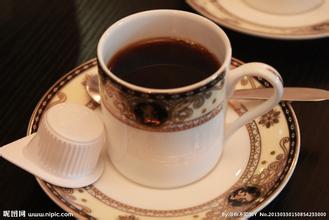Bolivian Coffee Snow vein Manor introduction to the characteristics of Bolivian Coffee Flavor Manor
Most Bolivian coffee is of average quality, but in recent years the production of specialty coffee has developed rapidly, and a lot of very good beans have appeared. In recent years, the COE (Cup of Excellence) system, which was first implemented in Brazil, has gradually become popular. Bolivia has also introduced this system. On the one hand, it can stimulate the enthusiasm of coffee farmers, on the other hand, it is also to improve the quality of coffee. COE beans are better than ordinary coffee, whether they are green beans or roasted coffee.
Bolivian coffee aroma rich and unique, whether it is the aroma of beans after grinding or the aroma of the coffee made are quite obvious, similar to the mixture of floral and fruit aroma, impressive.
Coffee Tour (XXV) Bolivian Coffee
The acidity is medium and low, but the feeling is not monotonous, but calm and generous, soft and fresh. You can even feel the sourness of citrus fruits when you taste them in the sourness.
Bolivia coffee overall taste rich and balanced, in addition to the good sour taste there is a light chocolate flavor, smooth taste is to give people a smooth feeling, in contrast to the bitter taste is not obvious. The aftertaste of coffee is very good. After drinking, the sweet taste in the mouth lingers. The wonderful experience brought by this coffee is unforgettable.
Coffee Tour (XXV) Bolivian Coffee
Each coffee-producing country should not be ignored, because good coffee is not divided into countries. Good coffee should be shared with everyone. Although Bolivia's coffee is not very well-known, I believe that with the enthusiasm and seriousness of the people here, Bolivia's good coffee will be tasted and shared by more and more friends. Salar de Uyuni is located near the small town of Uyuni in the southwest of Bolivia. It is the largest salt marsh in the world. It is about 250 kilometers long from east to west and 100 kilometers wide from north to south, covering an area of 10,582 square kilometers, rich in rock salt and gypsum. According to textual research, millions of years ago, it was a vast ocean. As the crust continued to rise, the sea gradually receded, leaving lakes behind.
Wuyuni Salt Marsh not only has extremely beautiful scenery, but also grows many rare animals and plants, enchanting millennium cacti, rare bees, and pink flamingos. Watching leisurely animals walk on it has become the most flexible scenery in the mirror of the sky. Such a beautiful scene must be a unique romantic adventure. The lake reflected the whole sky, the lake and sky were one color, blue and ethereal, and it was wonderful.
Sucre is the legal capital of Bolivia, the seat of the Supreme Court and the capital of Chuquisaca province. The population is approximately 110,000. Located at the eastern foot of the eastern Cordillera Mountains in the Cachmayo Valley. Altitude 2790 meters. The annual average temperature is 12℃ and the annual precipitation is 700 mm. It was originally an Indian village. Founded in 1538, the city was formerly known as Chuquisaca. In 1809, the first insurrection against Spanish rule in South America broke out here, and Bolivia was declared independent in 1825. It was named the capital in 1839 and the following year after Sucre, the first president. It became the legal capital in 1898. It is the distribution center and processing center of agricultural and sideline products in Sucre Basin. The main industries are petroleum extraction, metallurgy, textiles, cement, cigarettes, canned fruit and so on.
Lake Titicaca (Spanish: Titicaca) is the largest freshwater lake in South America, located in the Andes between Peru and Bolivia at an altitude of 3812 meters. It covers an area of 8290 square kilometers, with an average water depth of 140-180 meters and a maximum depth of 280 meters. There are 51 islands in the lake, most of which are inhabited. The largest island, Titicaca, has the ruins of an Inca temple and is also a sacred lake for Indians. The name of Lake Titicaca may be related to the local Indian language, which may mean "Jaguar's Cliff" or "Chief's Cliff"

Important Notice :
前街咖啡 FrontStreet Coffee has moved to new addredd:
FrontStreet Coffee Address: 315,Donghua East Road,GuangZhou
Tel:020 38364473
- Prev

Sidamo Coffee Flavor and taste the characteristics of Ted Manor are introduced.
The coffee in Sidamo has a variety of flavors. Different soil types, microclimates and countless native coffee species, towering mountains, highlands, plateaus, valleys and plains, diverse topography, and the geology of the area belongs to nutrient-rich, well-drained volcanic soil. the depth of the soil is nearly two meters, and the surface soil is dark brown or brown. The biggest advantage of the place is
- Next

Introduction to the flavor and taste of coffee manor in Tanzania
Southern coffee is rich in floral aromas, smooth on the palate with elegant acidity. 2) SweetMarias's introduction to TZ (with emphasis on flavor / quality) Tanzanian coffee has the excellent pedigree of the Middle Eastern non-washed bean family, bright acidity, rich and irritating flavor. There is no doubt that Kenyan coffee takes the lead in this family, but the quality of Tanzania is improving.
Related
- Does Rose Summer choose Blue, Green or Red? Detailed explanation of Rose Summer Coffee plots and Classification in Panamanian Jade Manor
- What is the difference between the origin, producing area, processing plant, cooperative and manor of coffee beans?
- How fine does the espresso powder fit? how to grind the espresso?
- Sca coffee roasting degree color card coffee roasting degree 8 roasting color values what do you mean?
- The practice of lattes: how to make lattes at home
- Introduction to Indonesian Fine Coffee beans-- Java Coffee producing area of Indonesian Arabica Coffee
- How much will the flavor of light and medium roasted rose summer be expressed? What baking level is rose summer suitable for?
- Introduction to the characteristics of washing, sun-drying or wet-planing coffee commonly used in Mantenin, Indonesia
- Price characteristics of Arabica Coffee Bean Starbucks introduction to Manning Coffee Bean Taste producing area Variety Manor
- What is the authentic Yega flavor? What are the flavor characteristics of the really excellent Yejasuffi coffee beans?

